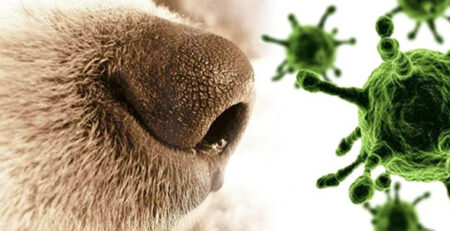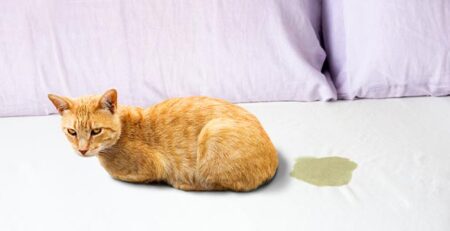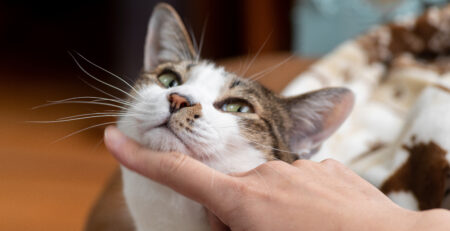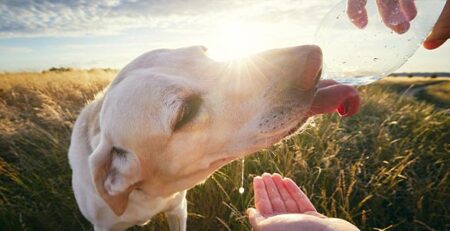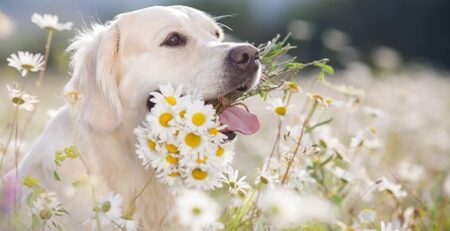Table of Contents
Dog and cat hair: a constant presence under the bed, on sofas and carpets, on your clothes and everywhere. At this time more than ever because we are entering the fall shedding season for dogs and cats. How to deal with it?
You may be unaware that dog and cat hair serves many functions.
The hairs that cover the skin of almost all mammals consist mainly of keratin and are sprayed by sebum, a fatty substance produced by the sebaceous glands, which lubricates the fur and exerts a protective action on the skin by increasing its impermeability and exerting a mild antibacterial action.
Primarily, they regulate body temperature by protecting the animal from excessive heat and defending it from intense cold.
Those connected to erectile muscles act as “transmitters” that can visually communicate states of nervousness or aggression.
If, on the other hand, they are connected to receptors and nerve fibers, they also serve as tactile organs: an example is the vibrissae of cats.
Hair growth is cyclical and is divided into four phases
- Growth: new hair emerges and begins to grow
- Regression: the hair reaches its final length and stops growing
- Rest: the fur dies
- Fall: the hair falls out and the follicle returns to the initial growth phase
Dog and cat hair is renewed in autumn and spring
Most animals lose their fur throughout the year but change it completely in spring and fall, coinciding with the changing seasons.
It is the so-called moulting or that biological phenomenon which consists precisely, in the case of mammals, of the periodic renewal of hair.
In spring the coat is totally renewed but grows back lighter and less dense.
In the fall, however, moulting results in the regrowth of a thicker undercoat.
Moulting varies in intensity and duration according to the breed and lifestyle of the dog and cat.
Changes in the coat are more evident in animals that live outdoors and are more affected by changes in climate and photoperiod-that is, the length of daylight hours versus dark hours.
Moulting and the dreaded hair knots
Skeins of tangled dead hair are a very obvious consequence of shedding.
To avoid the formation of annoying knots especially in the case of long-haired animals, brush your pet every day and several times a day, but do it correctly: starting from the head to the tail and following the direction of hair growth in order to avoid stressing the hair bulbs.
Constant removal of dead hair will allow your little friend’s skin to breathe and oxygenate.
If you notice dermatological complaints such as scabs, irritation, itching and redness on the skin, do not hesitate to contact your trusted veterinarian.
And again, do not suspend pesticide treatment against fleas and ticks-these parasites are present all year round, even in the fall/winter period.
Nutrition and hydration for a healthy and strong coat
Moisturizing your dog or cat is essential to keep skin and hair bulbs in perfect physiological condition and make shedding less stressful.
A balanceddiet rich in nutrients can also promote the growth of new hair.
The main substances useful for the well-being of your pet’s coat and skin are:
– Omega 3 and Omega 6
They improve the elasticity of cell membranes and increase the shine of the hair.
Those of animal origin are found in cod liver oil or salmon oil.
Those of plant origin can be found, however, in linseed and currant oil.
– B vitamins
They improve intestinal flora and promote the absorption of nutrients taken in with food.
They are mainly found in brewer’s yeast or in multivitamin supplements for animals.
– Vitamin E
This vitamin acts as an antioxidant. You can find it in several multivitamin supplements for animals. Vitamin E is synthesized from plants: oils and seeds are particularly rich in it. Recall wheat germ oil and flaxseed oil.
– Vitamin A
It protects the skin, helping to break down skin flaking and seborrhea, which can make the coat dull and smelly. It is found in eggs and dairy products.
Dog and cat hair allergy
That to pets, particularly dog and cat hair, is one of the most common “presumed” forms of allergy.
Many people suffer from it, and this problem is undoubtedly one of the first causes related to the abandonment of animals.
In general, allergy is a reaction of the immune system to certain substances, allergens, normally found in the outdoor environment or in food or occurring in the presence of animals.
Allergens are microscopic and light particles, invisible to the human eye, that easily spread and propagate in the air and persist for a long time in any environment.
Pet allergy is triggered by exposure to protein components contained in fallen hair, dead skin flakes, saliva and urine of animals.
Fel D1 protein is the allergen produced by the cat‘s sebaceous glands.
It is also present in dander, urine, saliva, tear fluid and sebum.
Having the habit of frequent licking to clean themselves, cats deposit Fel D1 on their bodies and thus on their fur, which then becomes a conductor of allergy.
Can F1 and Can F2 are, on the other hand, the allergens produced by the dog.
They are secreted by glands located under the tongue, but are not present in feces and urine.
The mode of spread is the same but dogs do not lick themselves as much as cats, so they contaminate their fur less.
When dog and cat are fake allergens
The pet is often a “fake allergen”-it is not contact with its hair, saliva, or dander that causes the allergy but contact with the mites that lurk in its fur.
In this case, the animal is a mere carrier and therefore should be exonerated.
Even with allergies, coexistence is possible
Having ascertained that cat and dog allergy is real and not assumed, nevertheless, some useful strategies can be put into practice to succeed in living with both this problem and your four-legged friend.
First, it would be wise to check that you do not have allergies of any kind BEFORE welcoming a dog or cat into your home.
Secondly, rather than giving up the company of an animal and especially before removing it, one should think carefully and consider all possible options:
Consult an allergist for a possible allergy vaccine or undergo the allergendesensitization process.
Desensitization is based on the principle of administering small, progressively increasing amounts of the allergens that cause the allergic reaction to the patient.
Indeed, recent studies show that repeated and frequent contact with small doses of allergen can minimize the immune system reaction. And again, put in place all necessary precautions.
Precautions
- Wash your pet regularly to decrease the amount of allergen on fur and skin
- Avoid having it stationed in the bedroom
- Remove hair from clothing using adhesive paper rolls
- Delegates to others the cleaning of the spaces where the animal sleeps and eats
- Use washable covers for upholstered furniture and chairs
- Eliminates carpets
Equip yourself with class 11 High Efficiency Particulate Air Filter (HEPA ) vacuum cleaners and air purifiers. HEPA filters can capture 95 percent of micro particles as small as a few microns (mold, dust mites, pollen).
No more excuses, then. Wanting is power.
For proper management of your four-legged friend during the molting period, book a specialist visit at our facility with our veterinary dermatologists who are available to give you the best advice.
We also remind you that Clinica La Veterinaria is open daily h24 including holidays and with First Aid service from 8 pm to 8 am.
To the delight of seeing THEY HAPPY.



